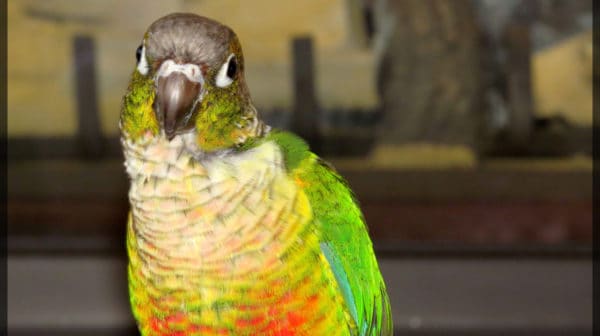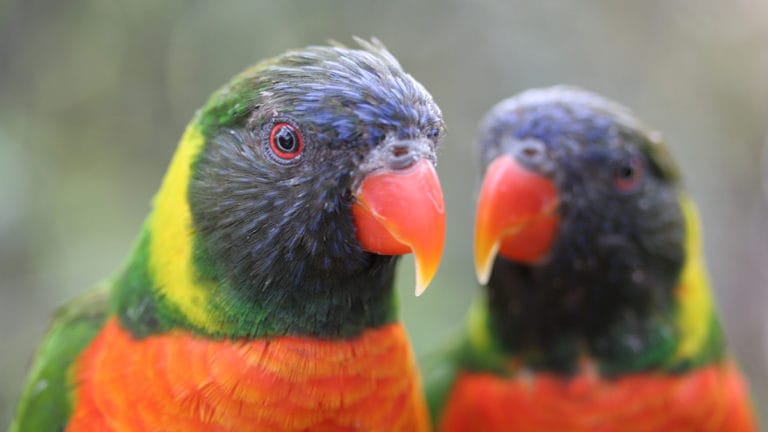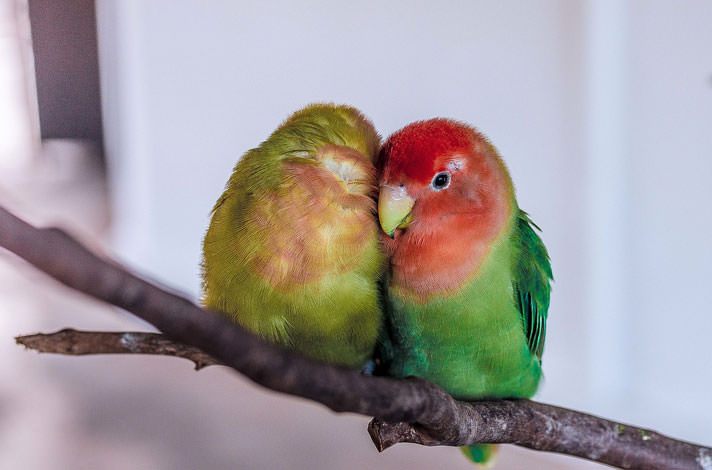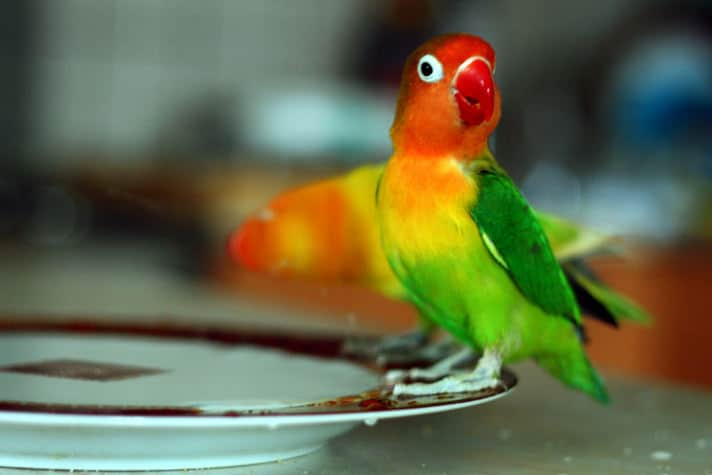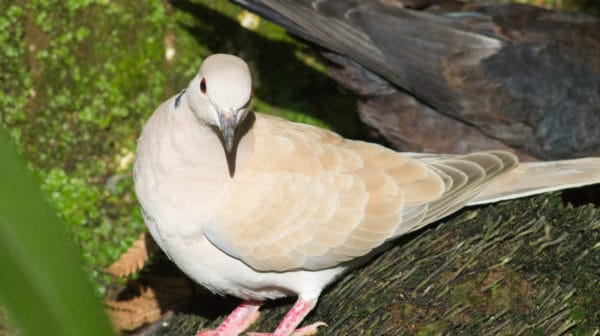Green-cheeked conures (Pyrrhura molinae) in particular are popular among the conure family because they have all the personality of a conure in a small, quiet(er) package. Conures as a family are considered very noisy. This is one drawback of conure ownership. Conures in the family Aratinga, like the suns, jendays and nandays to name a few, can be notoriously ear-splittingly loud, and many are given up because the owners or their neighbors simply can’t handle it. Green-cheeked conures, however, are in the Pyrrhura family, which are generally much quieter. Most Pyrrhura are actually quieter even than cockatiels and parakeets!
Green Cheek Conures As Companions
Green cheeks are a good bird for someone who wants all the clownish personality of a conure without all the noise, and they’re a good choice for someone living in an apartment, too. This does, however, mean that they are not as good a talker as some other conures, but they do chatter. Jon Peterson, a certified aviculturalist and supporting member of the International Association of Animal Behavior Consultants (IAABC) has owned green cheeks for 14 years, and he says their voices are actually fairly similar to a sun conure’s, but at a completely different decibel.
Green cheeks are readily available in pet stores and from breeders, and are not as expensive as some of the larger conures. They do need a large, sturdy cage, but the cost is still reasonable for a pet that is hopefully going to be around for up to 40 years.
Green-cheeked conures, while small, are very active, and they need a good deal of space to move around and lots of bird toys to play with. They will frequently perform feats of acrobatics, swinging from toys and hanging upside down to reach a treat or toy or simply to amuse themselves and their owners too. They are very social and therefore can be really great family birds. They need lots of stimulation, so make sure to provide lots of toys and interaction with their flock (i.e., you/the family). They thrive on attention and are also very attentive to what you are doing.
“They want to be on you and near you, whatever you are doing,” Peterson said.
Green cheeks seem to like a variety of both destructible toys—shredders are a favorite, as are small and/or soft pieces of wood to chew on—and sturdy, colorful bird toys. Foraging toys are also a good way to keep your bird occupied during the day. Peterson says his green cheeks are particularly good foragers, sometimes figuring things out quicker than his African greys.
Conures have some very interesting and particular habits. Many will play and sleep on their backs, something that most other parrots are inherently uncomfortable with. They also seem to love sleeping in tents/snuggle huts. Monitor any tent closely, though; there have been reports of birds chewing and fraying their little huts and getting dangerously (even fatally) tangled in them.
Conures in general seem to love to snuggle. Peterson told a charming story of a green cheek that tried to come snuggle with him while he was napping by shoving himself between his cheek and the pillow, which obviously was not a safe place. When he moved him back to his cage, the bird came right back and climbed into his sweatpants pocket! The green cheek at my store is fond of sitting under my ponytail, where he can cuddle up and preen my hair.
Conures do have a reputation for being a bit nippy and moody. While green cheeks are smaller than cockatiels, they have the intelligence and mindset of a larger parrot. Peterson says most green cheeks do outgrow their nippy stage, and they can be fairly easily trained to avoid bad behavior. A lot of the “nippy stage” is simple curiosity. A green cheek’s beak is her main tool for exploration, and she will use it a lot as they are growing and learning.
“If you have a freckle or any little blemish on your skin,” Peterson warned, “they will find it [and try to preen it off of you].”
But for this reason, greek cheeks would do better in families without very young children, who might not understand beaky behaviors. Green cheeks can do well as a first bird, but the owner would have to be willing to put time and effort into the training process. Someone that has had birds before will have an easier time of it. Green-cheeked conures are a fun, personable, active and quiet little bird that can be the perfect companion for someone who wants the “large parrot experience” without quite so much work.
Green-Cheeked Conure Color Mutations
Green-cheeked conures come in a few different color mutations. As with other parrots, the color mutations do not affect the personality or health of the bird, just her feather coloring.
Turquoise: The green on the bird is turquoise or blue instead of olive green. The chest feathers are gray to tan, and the tail feathers are gray.
Cinnamon: The colors in the bird are slightly brighter/lighter; the head is tan and the beak and feet are horn-colored, rather than black.
Yellow-sided: There is bright yellow on their breasts. The amount and position can vary, though it should be very noticeable, since normal green cheeks can have some yellow as well.
Pineapple: A combination of cinnamon and yellow-sided.
Posted by: Chewy Editorial
Share:
